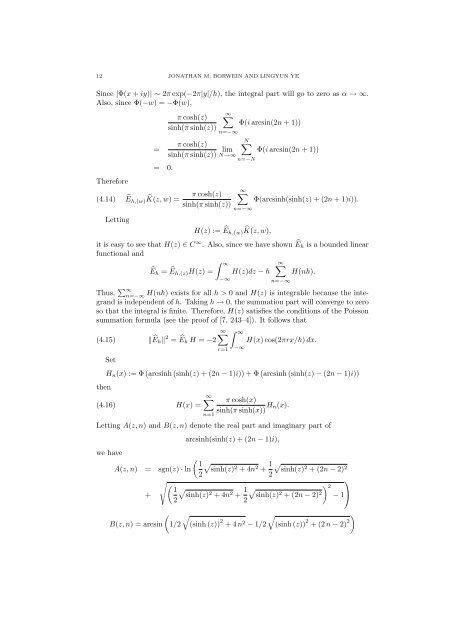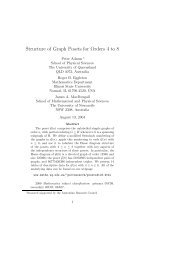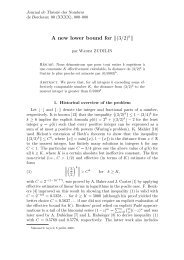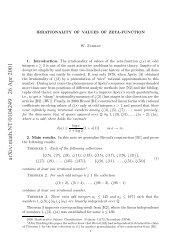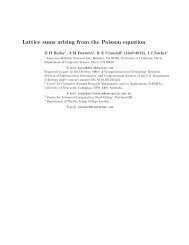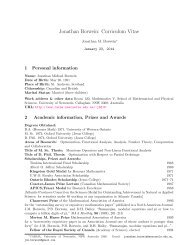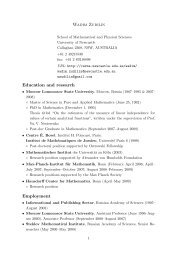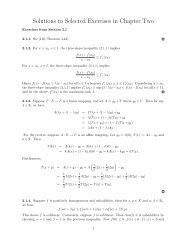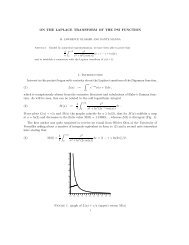QUADRATIC CONVERGENCE OF THE TANH-SINH ...
QUADRATIC CONVERGENCE OF THE TANH-SINH ...
QUADRATIC CONVERGENCE OF THE TANH-SINH ...
Create successful ePaper yourself
Turn your PDF publications into a flip-book with our unique Google optimized e-Paper software.
12 JONATHAN M. BORWEIN AND LINGYUN YESince |Φ(x + iy)| ∼ 2π exp(−2π|y|/h), the integral part will go to zero as α → ∞.Also, since Φ(−w) = −Φ(w),π cosh(z)∞∑Φ(i arcsin(2n + 1))sinh(π sinh(z))Therefore== 0.n=−∞π cosh(z)sinh(π sinh(z)) lim(4.14) Ê h,(w) ̂K(z, w) =π cosh(z)sinh(π sinh(z))LettingN∑N→∞n=−N∞∑n=−∞H(z) := Êh,(w) ̂K(z, w),Φ(i arcsin(2n + 1))Φ(arcsinh(sinh(z) + (2n + 1)i)).it is easy to see that H(z) ∈ C ∞ . Also, since we have shown Êh is a bounded linearfunctional and∫ ∞∞∑Ê h = Êh,(z)H(z) = H(z)dz − h H(nh).−∞n=−∞Thus, ∑ ∞n=−∞H(nh) exists for all h > 0 and H(z) is integrable because the integrandis independent of h. Taking h → 0, the summation part will converge to zeroso that the integral is finite. Therefore, H(z) satisfies the conditions of the Poissonsummation formula (see the proof of [7, 243–4]). It follows that∞∑∫ ∞(4.15) ‖Êh‖ 2 = Êh H = −2 H(x) cos(2πrx/h) dx.Setthenr=1H n (x) := Φ (arcsinh (sinh(z) + (2n − 1)i)) + Φ (arcsinh (sinh(z) − (2n − 1)i))(4.16) H(x) =∞∑n=1−∞π cosh(x)sinh(π sinh(x)) H n(x).Letting A(z, n) and B(z, n) denote the real part and imaginary part ofarcsinh(sinh(z) + (2n − 1)i),we have( 1 √A(z, n) = sgn(z) · ln sinh(z)2 + 4n22 + 1 √sinh(z)2 + (2n − 2)22√ ⎞(1√+ sinh(z)2 + 4n22 + 1 )√ 2sinh(z)2 + (2n − 2)22 − 1⎠( √)B(z, n) = arcsin 1/2 (sinh (z)) 2 + 4 n 2 − 1/2√(sinh (z)) 2 + (2 n − 2) 2


